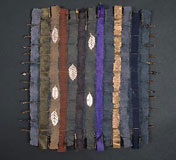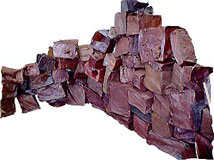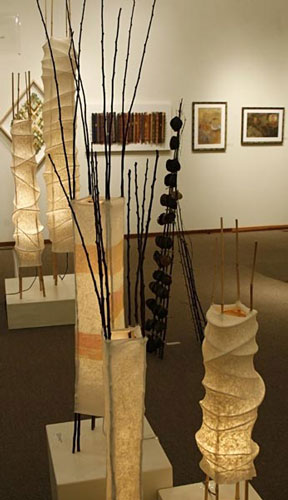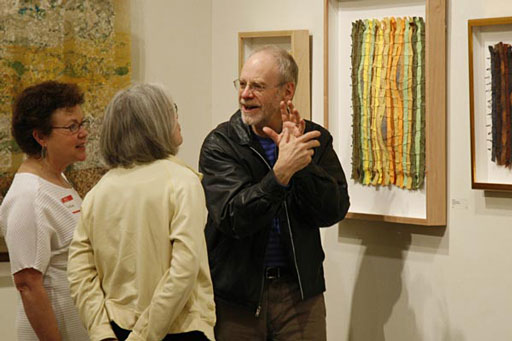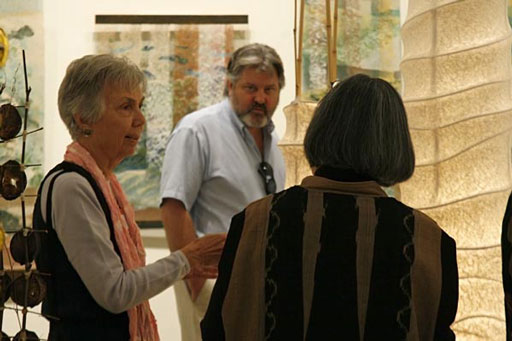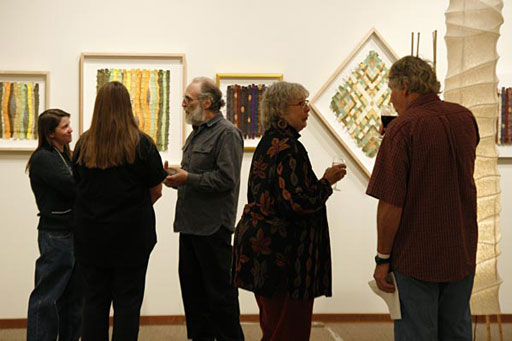
Home
Gualala Arts
Promoting public interest and participation in the arts since 1961.
Archive of past events: 2004 through 2014
The Deckle Edge GroupOpening Reception: Saturday, October 11, 2008 at 5:00 p.m.Exhibit remains through November 2 Burnett Gallery
The Deckle Edge Group was founded fifteen years ago by four artists who were using handmade paper as a fine art medium. It was not a medium that was part of the mainstream, but they saw it as a way to expand their artistic expression. They decided it would be interesting and beneficial to meet and share information while visiting each other's studios. Since that time, when Andrea Tucker-Hody initiated the idea, and she, Joan Rhine and Jim Meilander gathered at Susan Hersey's studio, the group has expanded and currently includes seven artists. It continues to evolve as members focus on other artistic endeavors and new people join. The group shows their work together from time to time. Each artist has a unique way of using the medium, offering a wide diversity of artistic possibilities.
Our seven members are professional artists who come from diverse locations in Northern California. Lori Goodman lives in Eureka, Bev Harrington in Danville, Susan Hersey in Petaluma, Linda Ortiz in Santa Rosa, and Andrea Tucker-Hody in San Anselmo. Jim Meilander and Joan Rhine moved to Gualala from San Francisco in January, 2000. The Hand Papermaking ProcessExcerpts from Hand Papermaking, Inc. © 1994 The MaterialsThis main ingredient in papermaking, the cellulose fiber which binds together to form the paper, is available to hand papermakers in a number of different forms. Any natural fiber cloth, such as cotton, linen, or ramie, is suitable for making paper from. A large variety of raw fibers can be used for papermaking. These fall into three categories: bast or inner bark fibers (such as kozo, the bark of the mulberry tree and flax), leaf fibers (such as abaca and sisal), and grass fibers (such as bamboo and rice straw). Preparing the PulpMost raw fibers require some treatment before they are ready to be used for making paper. In addition to various visual and tactile properties, your selection of fiber for papermaking will depend on the kind of equipment you have and the effort you wish to put into preparing the pulp. Traditional methods for breaking down cloth, plant fiber, or paper to be recycled include soaking, fermenting, adding chemicals and beating, using either a stamper, a Hollander beater, or by hand. By treating the plant materials, individual fibers can be separated and suspended in water. Cooking material, especially raw fiber, before beating also helps accelerate the process of separation. FormationAfter the fibers are beaten into pulp, formation aid and other additives are mixed in. Sheets and sculptural forms are formed by different methods with very diverse results. Most flat sheets are formed with a mould and deckle. Other methods of pulp application include pouring, spraying or painting. Pulp can be laminated, embedded, stenciled, embossed or collaged. Texture can be applied during formation and as part of the drying process. ColoringWhile some papermakers prefer the unaffected shades of natural fibers, other hand papermakers consider it an important element in the work. Colored paper can be made from colored rags, but most hand papermakers use dyes or pigments to change the color of a pulp. In general, colorants are mixed in with the pulp before it is added to the vat. Most pigments require an additive called a retention aid or agent to help them adhere to the fiber. DryingAfter forming the sheets of pulp, removing the water from and drying the sheets are the next important steps in the process. This is done in a variety of ways. In many papermaking traditions, the papermaker places a stack or "post" of newly-formed sheets under pressure, which both strengthens the paper by increasing fiber bonding and accelerates the drying process by squeezing out large amounts of water. Presses range from boards with heavy weights (easily reproduced in a simple studio setting), to elaborate, large screw presses, to modern hydraulic presses. Most papermakers do not fully dry sheets of paper in a press, however, as air circulation and other considerations make alternative methods more practical. Sheets of paper formed Nepalese-style, in which sheets are formed in a floating, cloth-covered mold, are dried in that same mold (and not pressed at all). In this tradition, the papermaker needs many molds, as each mold is in use as long as a piece of paper is drying on it. Usually sunlight and air alone dry this type of paper. Asian papermakers sometimes dry their sheets by simply laying them on the ground. They use this method for papers which will become for wrapping, stuffing, floor coverings, or other utilitarian products which do not require a smooth, even surface. Especially for paper made from fibers which exhibit high shrinkage, such as linen, papermakers should dry their sheets under pressure if they want to keep them flat. Otherwise, distortion, cockling, and other irregularities will appear in the dried sheets. Sometimes this is desirable and done on purpose. ConclusionMost people think of paper as a writing or drawing surface, and certainly many beautiful handmade papers are crafted for this purpose. Today paper takes its rightful place among the other traditional fine art mediums and is a new alternative in wall art, installation art or site specific sculpture and other large-scale works.
The Deckle Edge GroupBurnett Gallery
|
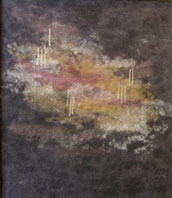 The Deckle Edge Group will present a free exhibit at Gualala Arts Center from the opening October 11 through November 2, 2008. Lori Goodman, Beverly Harrington, Susan Hersey, Jim Meilander, Linda Ortiz, Joan Rhine and Andrea Tucker-Hody are each artists working in paper and/or hand papermakers.
The Deckle Edge Group will present a free exhibit at Gualala Arts Center from the opening October 11 through November 2, 2008. Lori Goodman, Beverly Harrington, Susan Hersey, Jim Meilander, Linda Ortiz, Joan Rhine and Andrea Tucker-Hody are each artists working in paper and/or hand papermakers.
